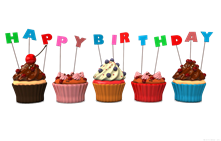There is no denying that the Covid-19 pandemic has been the experience that just never stops giving! Yet another year has gone by that was manipulated, manoeuvred, and messed with by it. Although I do recognize that it was a year that saw vast parts of the world, resign itself to living with the consequences and moving forward with the knowledge of expected responses and acceptance of this way of being. That’s all the space I’m going to give to Covid-19 in this blog, although the consequences no doubt ripple through.

2022 changed the way we work for ever. Although there are a few CEOs currently displaying poor leadership in their demands for everyone back to the office (its not the ask, it’s the poor reasoning behind it!) its safe to say that the place of work will forever be changed. Many organizations have realized its possible to undertake their business remotely, recognized that daily commuting is not a pleasure for many and that rising energy costs can be offset by reducing office space needs. I would say that 2022 has been the year of hybrid working – whatever that means, and its not the same to everyone. I see hybrid as the situation where some folks are in the office and some are at home, but the experience and service offered is exactly the same, irrespective of the location. When organizations talk about offering services online and in person, but its not the same, I prefer to call that blended delivery. I used that term for Toronto Change Days 2022 as we had some stuff online and some in person, complimenting each other, but they were different activities.

I’ve seen lots of references to the word of the year for 2022 and 2023. Hybrid was probably one of the words of 2022 for many people. It was used a lot. What other word came to the forefront in 2022? I think bringing it back into the change space, the word transformation certainly got its mileage in this past year. Its not a new word or an unusual word in the change space but there was a most definitely move to classify everything as transformative in 2022, and actually going into 2023 it is much the same. Now its not that I have an issue with the word – I certainly don’t – but I do have an issue with it being used as a replacement for “hard change”, or “challenging change”, or “big change” or “lots of change” as if it’s a label that appears to allow a get out clause on the difficulties of making the change ahead – “ Oh lets call it a transformation and people will know its big and messy. None of that simple change we’ve all been dealing with easily for decades now!” As if we’ve been dealing with simple change all along! Digital Transformation is not an IT implementation it’s a culture and behaviour shift change, that I strongly recommend not giving to the Chief Technology/Information/Systems Officer – as its success is about adoption of technology not implementation of said tech!

As I personally reflect upon 2022, I have to say that there are 2 words that rose to prominence for me. They are Knowledge and Value. The knowledge piece reflects my continued desire to both gain knowledge from others and share it in equal measure. I have achieved my learning goals in 2022 almost. I completed my indigenous awareness, understanding and collaboration certifications, completed the Appreciative Inquiry (AI) course (practicum pending) and squeezed in my CCMP at the start of January 2022 as health and technology challenges forced it back a few weeks from the end of December. I had intending to do the 12 Days of Deming course too, but time was not cooperative with me for the timing of the discussions. I’m not sure what 2023 will include but I will explore the feasibility of the Deming course, I am seeking opportunities for my AI practicum (reach out if you have an idea) and I am playing with some ideas in my head – details to follow.

Value and values are very emotional words for me. Recognizing the value of what I do and the value to the people who work with and around me is at my heart the greatest motivator to me to do what I do. I’ve truly realised that the currency of my value is not money but impact and affect. The greater the awakening of potential in others (individual or organization) the more I am motivated to keep on doing it. Through the creation of the Capillary Values Wheel this year, I also realized that this same motivation to do the best of others is key to the company and my continued development of it. When I say I am very values driven, then this about alignment with said values for achievement of meaningful goals with others.
I’m nervously excited about 2023. I appreciate everyone I have worked with, facilitated for and shared knowledge to in the past year and those yet to be part of my journey. I look to a great year ahead and opportunities for all.























